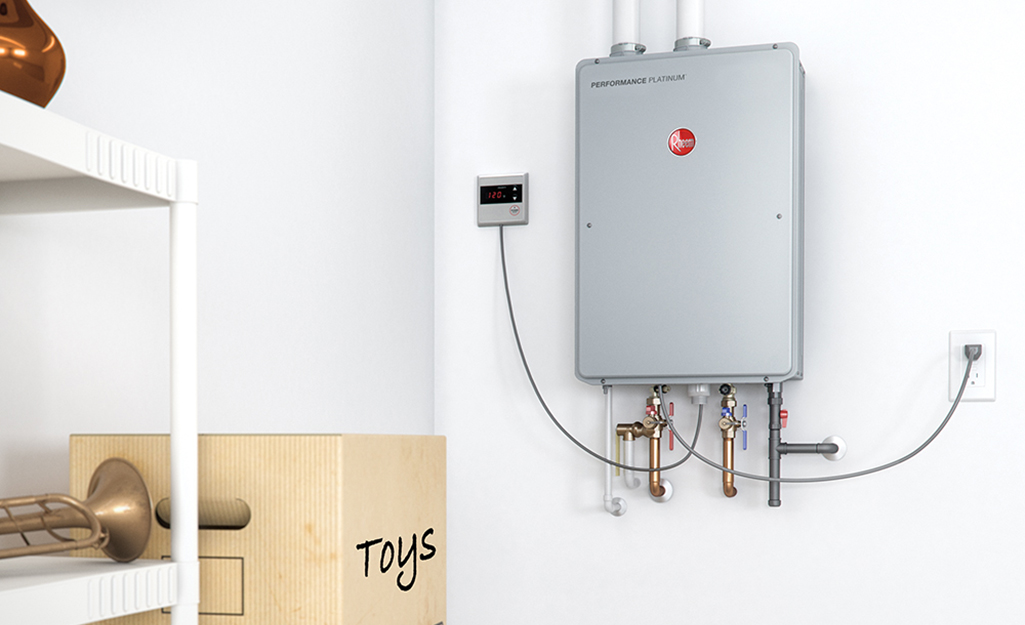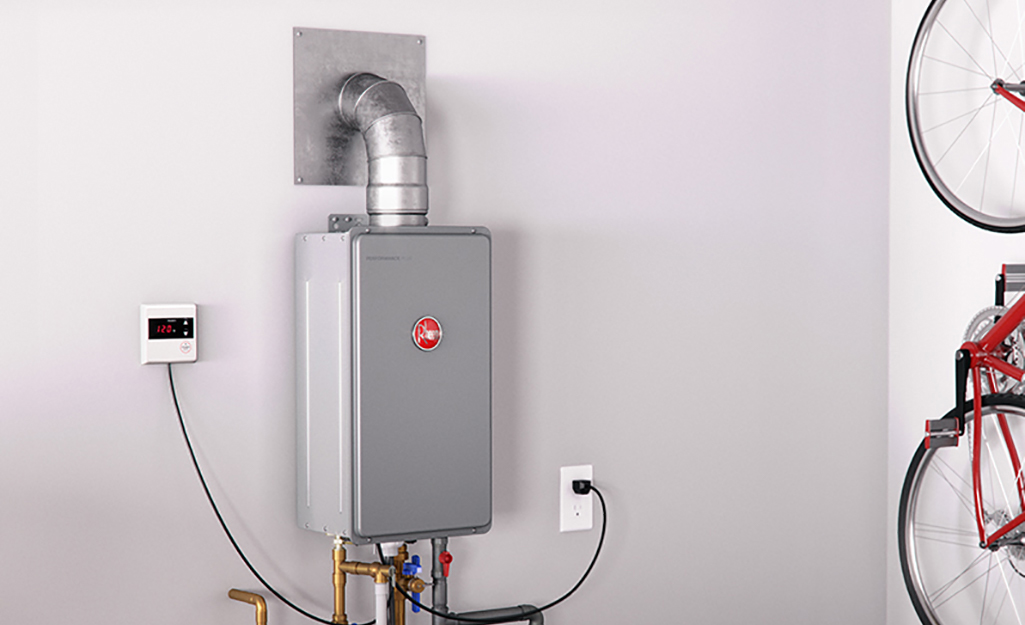Yes, a tankless water heater can be installed inside. Ensure proper ventilation and follow local building codes.
Tankless water heaters offer a compact solution for efficient hot water needs. Unlike traditional heaters, they heat water on demand, saving energy and space. Installing one indoors can maximize utility in smaller homes or apartments. Proper placement is crucial for optimal performance and safety.
Ventilation is a key factor to consider, as these units require adequate airflow to function effectively. Additionally, many homeowners appreciate the flexibility that indoor installation provides, allowing easier access for maintenance and repairs. Before installation, consult a professional to ensure compliance with local regulations and to determine the best unit for your specific needs. Enjoy endless hot water while maximizing your available space!
Page Contents
- 1 Introduction To Tankless Water Heaters
- 2 Key Considerations For Indoor Installation
- 3 Understanding The Power Source
- 4 Venting Solutions For Indoor Tankless Systems
- 5 Water Supply And Plumbing Concerns
- 6 Safety Protocols For Indoor Installation
- 7 Maintenance And Accessibility
- 8 Case Studies: Successful Indoor Installations
- 9 Choosing The Right Model For Your Home
- 10 Professional Installation Vs. Diy
- 11 Potential Challenges And Solutions
- 12 Future Innovations In Tankless Technology
- 13 Conclusion
Introduction To Tankless Water Heaters
Tankless water heaters offer many advantages. They provide hot water on demand. This means no more waiting for a tank to fill. They are also energy-efficient and can save money on bills.
Indoor installation is popular for its space-saving design. These heaters fit well in small areas. Outdoor models require proper weather protection. They may need a cover for harsh conditions.
Choosing the right installation depends on your home’s layout. Indoor units are great for apartments. Outdoor units work well in houses with extra space. Always consider local codes and regulations.

Credit: www.homedepot.com
Key Considerations For Indoor Installation
Installing a tankless water heater indoors requires careful planning. Ensure there is enough space for the unit. Most models need at least 12 inches of clearance on all sides. This space helps with maintenance and airflow.
Proper ventilation is crucial for indoor installations. A venting system must direct exhaust gases outside. This keeps the air safe and healthy. Check local building codes for specific ventilation requirements. Some units may need direct venting, while others can use power venting.
Understanding The Power Source
Tankless water heaters can use electric or gas as their power source. Each option has its own benefits.
Electric models are easier to install. They require less space and can fit in small areas. These units often have lower upfront costs. They work well in warmer climates.
Gas-fueled options provide higher flow rates. They are more efficient for larger homes. However, they need proper venting. This can increase installation complexity and cost.
| Power Source | Benefits | Considerations |
|---|---|---|
| Electric | Easy installation, lower costs | Less efficient for larger needs |
| Gas | Higher flow rates, efficient | Requires venting, higher installation cost |
Venting Solutions For Indoor Tankless Systems
Indoor tankless systems require proper venting to operate safely. Direct venting is a common choice. It uses two pipes: one for exhaust and another for fresh air. This method is efficient and safe.
Power venting is another option. It uses a fan to push exhaust outside. This type of venting allows for flexible installation locations. It is ideal for homes with limited space.
Outdoor air intake can also be used. This method draws air from outside the home. It is essential to install it correctly. Proper installation ensures the system works well and safely.
Water Supply And Plumbing Concerns
Proper water flow is vital for a tankless water heater. Make sure the water supply line is large enough. This ensures the heater gets enough water quickly. Check the plumbing connections too. They should be tight and secure.
Hard water can cause many issues. It leads to mineral buildup in the heater. This can reduce efficiency and lifespan. Use a water softener to prevent problems. Regular maintenance is also important. Flush the heater to remove any buildup.
Safety Protocols For Indoor Installation
Installing a tankless water heater indoors requires strict safety protocols. Carbon monoxide alarms are essential for detecting any harmful gas. These alarms must be installed near the heater for effective monitoring. Regular checks ensure they function properly.
Check local building codes and regulations before installation. Each area may have specific rules regarding indoor heaters. Compliance with these codes helps ensure safety and legality. Professional installation is often required to meet these standards.
Maintenance And Accessibility
Regular servicing of a tankless water heater is essential. This ensures optimal performance and extends its lifespan. Checking filters and flushing the system helps prevent buildup. Schedule maintenance every year to keep everything running smoothly.
Ease of access for repairs is important. Install the heater in a spot that is easy to reach. This makes it simpler for technicians to do their work. Clear space around the unit helps with airflow too. A well-placed heater saves time and money on repairs.

Credit: www.homedepot.com
Case Studies: Successful Indoor Installations
Tankless water heaters can be successfully installed in residential settings. They save space and provide endless hot water. Many homeowners enjoy the energy efficiency these heaters offer.
In commercial settings, tankless water heaters are also beneficial. They can handle high demand and reduce utility bills. Businesses appreciate the reliability and lower maintenance costs.
| Application | Benefits |
|---|---|
| Residential | Space-saving, energy-efficient, endless hot water |
| Commercial | High demand, reduced utility bills, reliable performance |
Choosing The Right Model For Your Home
Choosing the right model is essential for your home. Size and capacity play a key role in performance. Tankless water heaters come in various sizes. Pick one based on your household needs. Smaller families may need less capacity. Larger families will require more.
Energy efficiency ratings are important too. Look for models with high ratings. These heaters save money on energy bills. They also reduce environmental impact. Check labels carefully before buying. A higher rating means better performance and savings.

Credit: forum.nachi.org
Professional Installation Vs. Diy
DIY installation of a tankless water heater has some clear advantages. It can save money on labor costs. Homeowners can learn new skills while doing the work. But there are risks involved. Mistakes can lead to costly repairs or safety issues.
Hiring a professional ensures proper installation. Experts have the necessary experience and tools. They can handle any unexpected problems that arise. This option can be more expensive but offers peace of mind.
| Pros of DIY | Cons of DIY |
|---|---|
| Cost savings | Risk of errors |
| Skill development | Time-consuming |
| Flexibility | Limited knowledge |
Finding qualified installers can be a challenge. Look for licensed professionals in your area. Check reviews and ask for recommendations. Ensure they have experience with tankless water heaters.
Potential Challenges And Solutions
Installing a tankless water heater inside may cause some noise issues. These units can produce sounds during operation. Using soundproofing materials can help reduce this noise. Placing the heater away from living areas also helps.
Cost management is important in this process. Installation costs can vary based on location and labor. Consider comparing quotes from several contractors to find the best price. Energy savings from a tankless system can offset initial costs over time.
| Challenge | Solution |
|---|---|
| Noise | Use soundproofing materials or relocate the unit |
| Cost | Compare quotes and consider long-term savings |
Future Innovations In Tankless Technology
Tankless water heaters are evolving quickly. Smart home integration is a big trend. Many new models connect to Wi-Fi. This allows users to control settings remotely. Energy efficiency is also improving. New technologies help save money and resources. Some heaters can adjust energy use based on demand. This means lower utility bills for households. Smart features can also send alerts for maintenance. Keeping track of your heater’s health is easier now. These advancements make tankless heaters a great choice for homes.
Conclusion
Installing a tankless water heater indoors is a practical choice for many homeowners. It offers space savings and energy efficiency. Proper ventilation and professional installation are essential for optimal performance. With the right setup, you can enjoy endless hot water while maximizing your home’s energy efficiency.
Make an informed decision for your needs.
